Solid-State Batteries in Cars: What You Need to Know in 2025
Anúncios
The automotive industry stands at a pivotal crossroads in 2025, with solid-state batteries in cars emerging as a transformative force.
Unlike traditional lithium-ion batteries, solid-state batteries promise enhanced safety, faster charging, and greater energy density, reshaping how we perceive electric vehicles (EVs).
As manufacturers race to integrate this technology, understanding its implications becomes essential for consumers, investors, and enthusiasts alike.
Anúncios
This article delves into the mechanics, benefits, challenges, and future of solid-state batteries, offering a clear lens into their revolutionary potential.
Why should you care about solid-state batteries?
These powerhouses could redefine your driving experience, from slashing charging times to extending range far beyond today’s standards.
Let’s explore how this technology works, why it matters, and what hurdles remain before it dominates the roads.
How Solid-State Batteries Work
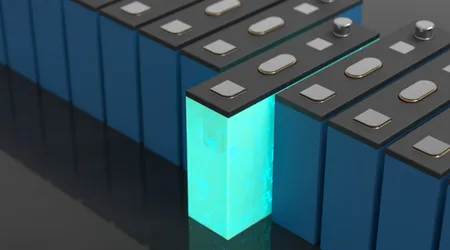
Solid-state batteries differ fundamentally from conventional lithium-ion batteries by replacing liquid electrolytes with solid ones.
This shift, while seemingly simple, unlocks profound advantages.
++ 5G in Cars: What It Actually Enables in Real-Time Driving
The solid electrolyte, often made of ceramic or polymer materials, conducts ions between the anode and cathode without the flammable liquid found in traditional batteries.
Consequently, this design reduces fire risks and enhances stability, making solid-state batteries a safer choice for EVs.
Imagine a solid-state battery as a tightly packed sandwich, where each layer electrolyte, anode, and cathode works in harmony without the mess of liquid spillage.
This analogy highlights the compact, robust nature of the technology.
For instance, Toyota’s prototype solid-state battery, showcased in 2024, uses a sulfide-based electrolyte that boosts ion conductivity, enabling faster charging.
Such innovations signal a departure from the bulky, volatile systems of the past.
Beyond safety, the absence of liquid allows for denser energy storage.
A 2024 study by the International Energy Agency (IEA) revealed that solid-state batteries could achieve energy densities up to 500 Wh/kg, nearly double that of top-tier lithium-ion batteries (around 260 Wh/kg).
This leap translates to EVs traveling farther on a single charge, addressing a key consumer pain point—range anxiety.
| Feature | Solid-State Battery | Lithium-Ion Battery |
|---|---|---|
| Electrolyte Type | Solid (ceramic, polymer, or sulfide) | Liquid or gel |
| Energy Density | Up to 500 Wh/kg | 150–260 Wh/kg |
| Charging Time | Potentially under 15 minutes | 30–60 minutes (fast charging) |
| Safety | Low fire risk due to non-flammable design | Higher fire risk due to liquid electrolyte |
Why Solid-State Batteries Matter for EVs
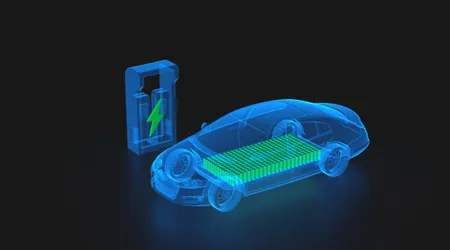
The promise of solid-state batteries in cars lies in their ability to address longstanding EV limitations.
First, their higher energy density means longer ranges.
++ How Over-the-Air Updates Are Redefining Car Ownership
For example, a hypothetical 2025 sedan equipped with a solid-state battery could travel 600 miles on a single charge, compared to 300–400 miles for most lithium-ion-powered EVs today.
This extended range could make EVs viable for long-distance travelers, a segment previously hesitant to abandon gas-powered vehicles.
Moreover, charging speed transforms the user experience. Picture pulling into a charging station during a road trip and being back on the road in 15 minutes faster than a coffee break.
Companies like QuantumScape are already testing prototypes that charge from 10% to 80% in under 12 minutes, a feat that could eliminate the inconvenience of long charging stops.
This efficiency not only boosts convenience but also supports grid stability by reducing peak demand at charging stations.
However, the real game-changer is lifecycle cost. Solid-state batteries last longer, with some prototypes enduring over 1,000 charge cycles with minimal degradation.
This durability could lower the total cost of EV ownership, making them more accessible.
++ The Truth About EV Battery Swapping: Is It Finally Viable?
As production scales, experts predict a 20–30% cost reduction per kWh by 2030, positioning solid-state batteries as a cornerstone of mass-market EV adoption.
| Benefit | Impact on EVs | Consumer Advantage |
|---|---|---|
| Higher Energy Density | Longer range (up to 600 miles) | Fewer charging stops, less range anxiety |
| Faster Charging | 10–80% charge in under 15 minutes | Time savings, better trip planning |
| Longer Lifespan | Over 1,000 charge cycles | Lower replacement costs, better value |
Challenges Holding Back Adoption
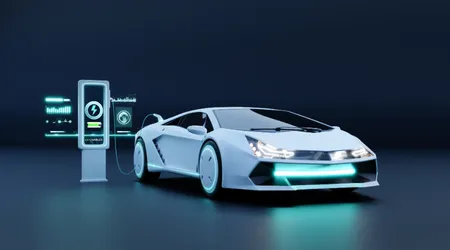
Despite their potential, solid-state batteries in cars face significant hurdles.
Manufacturing complexity tops the list.
Solid electrolytes require precise engineering to ensure consistent ion conductivity, and scaling this process to mass production remains costly.
For instance, while Toyota aims for commercial solid-state EVs by 2027, current prototypes cost significantly more than lithium-ion alternatives, limiting their immediate market reach.
Another challenge is material compatibility.
The solid electrolyte must pair perfectly with the anode and cathode to avoid degradation over time.
Early solid-state designs struggled with dendrite formation—tiny metallic growths that can short-circuit the battery.
Researchers at MIT recently developed a hybrid electrolyte to mitigate this, but widespread implementation is years away.
This technical barrier underscores the gap between lab success and road-ready solutions.
Consumer perception also plays a role.
Many drivers remain unaware of solid-state technology or skeptical of its readiness.
Automakers must invest in education to build trust, as seen in Nissan’s 2024 campaign highlighting its solid-state roadmap.
Without clear communication, adoption could lag, even as the technology matures.
| Challenge | Description | Current Status |
|---|---|---|
| Manufacturing Cost | High due to complex production processes | Scaling efforts ongoing, costs dropping |
| Material Compatibility | Risk of dendrite formation, degradation | Hybrid electrolytes in development |
| Consumer Awareness | Limited knowledge of benefits | Marketing campaigns starting to emerge |
The Future of Solid-State Batteries in Cars
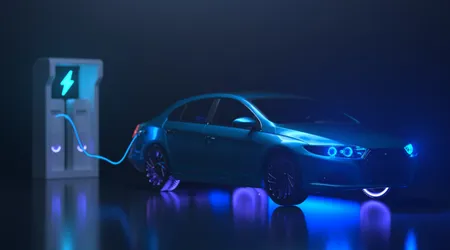
Looking ahead, solid-state batteries in cars could redefine automotive design.
Their compact size allows for sleeker, lighter vehicles, as demonstrated by BMW’s 2025 concept car, which integrates a solid-state battery into a modular chassis, reducing weight by 15%.
This efficiency opens doors to innovative designs, from ultra-light city cars to high-performance EVs rivaling supercars.
Environmental impact is another key factor.
Solid-state batteries require fewer rare materials like cobalt, reducing reliance on ethically fraught mining practices.
By 2030, the IEA projects that solid-state adoption could cut EV battery-related emissions by 25%, aligning with global sustainability goals.
This shift positions EVs as not just a consumer choice but a planetary necessity.
What’s more, the technology could extend beyond cars.
Imagine solid-state batteries powering electric buses or delivery drones, where weight and safety are paramount.
Companies like Solid Power are already exploring applications in heavy-duty transport, hinting at a broader energy revolution.
Could solid-state batteries be the key to decarbonizing transportation entirely?
| Future Application | Potential Impact | Timeline |
|---|---|---|
| Automotive Design | Lighter, sleeker vehicles | Prototypes by 2027, mass adoption by 2030 |
| Sustainability | Reduced reliance on rare materials | Significant impact by 2030 |
| Beyond Cars | Use in buses, drones, and more | Exploratory phase, scaling by 2035 |
Addressing Common Misconceptions
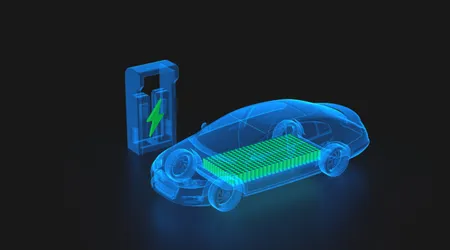
Many assume solid-state batteries in cars are a distant dream, but progress is accelerating.
Unlike earlier battery breakthroughs that fizzled out, solid-state technology has tangible momentum.
For example, Samsung SDI’s 2024 pilot production line is already supplying test units to automakers, proving the technology is closer than skeptics think.
This counters the myth that solid-state batteries are perpetually “five years away.”
Another misconception is that solid-state batteries will instantly replace lithium-ion ones. In reality, the transition will be gradual.
Hybrid systems, blending solid and liquid electrolytes, could bridge the gap, offering incremental improvements while manufacturers refine fully solid-state designs.
This pragmatic approach ensures reliability without sacrificing innovation.
Lastly, some worry about cost. While initial prices are high, economies of scale will drive affordability.
By 2028, analysts forecast that solid-state battery costs could approach parity with lithium-ion, especially as companies like CATL invest heavily in production.
This trajectory mirrors the rapid cost decline of lithium-ion batteries over the past decade.
| Misconception | Reality | Evidence |
|---|---|---|
| “Too Far Off” | Commercial prototypes exist | Samsung SDI’s 2024 pilot line |
| “Will Replace Lithium-Ion Overnight” | Gradual transition via hybrid systems | Toyota’s hybrid electrolyte tests |
| “Too Expensive” | Costs dropping with scale | Forecasted cost parity by 2028 |
Solid-state batteries in cars: Dúvidas Frequentes (FAQs)
| Question | Answer |
|---|---|
| When will solid-state batteries be available in cars? | Prototypes are in testing, with commercial models expected by 2027–2030. |
| Are solid-state batteries safer than lithium-ion? | Yes, their non-flammable design significantly reduces fire risks. |
| Will they make EVs cheaper? | Over time, yes, as production scales and lifespans extend, lowering costs. |
| Can existing EVs use solid-state batteries? | Retrofits are unlikely; new designs are needed to leverage their benefits. |
| How do they impact the environment? | They use fewer rare materials, reducing mining and emissions impacts. |
Conclusion: solid-state batteries in cars
Solid-state batteries in cars are not just an incremental upgrade they’re a paradigm shift.
From slashing charging times to extending ranges and enhancing safety, they address the core pain points of EV adoption.
While challenges like manufacturing costs and material compatibility persist, the trajectory is clear: solid-state technology will shape the future of transportation.
As automakers like Toyota, BMW, and Nissan push toward commercialization, consumers stand to gain vehicles that are safer, more efficient, and more sustainable.
The question isn’t whether solid-state batteries will transform cars, but how quickly we’ll embrace the change.
Are you ready for an EV that charges faster than your morning coffee brews?
